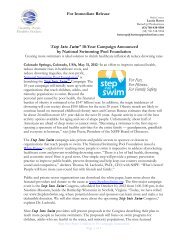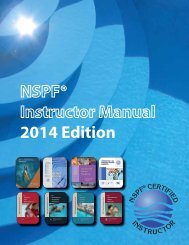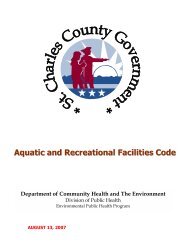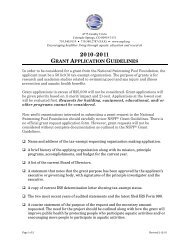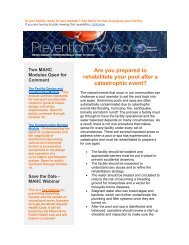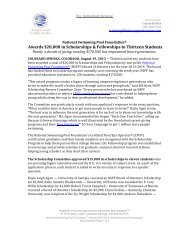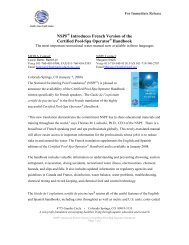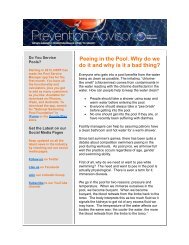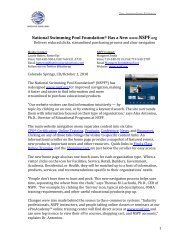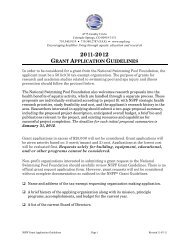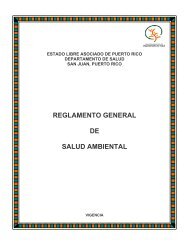English Instructor Manual (PDF) - Metric Version - National ...
English Instructor Manual (PDF) - Metric Version - National ...
English Instructor Manual (PDF) - Metric Version - National ...
You also want an ePaper? Increase the reach of your titles
YUMPU automatically turns print PDFs into web optimized ePapers that Google loves.
Lesson 2 – Aquatic Risk Management<br />
Suggested Time:<br />
PowerPoint Slides:<br />
Materials:<br />
60 minutes<br />
ARM Lesson 2 Slides<br />
Aquatic Risk Management Handbook<br />
Objectives: At the end of this unit the student will be able to:<br />
Explain the various acts a manager can undertake to minimize the risks associated with<br />
aquatic environment<br />
List the steps in developing a risk management plan<br />
Leading Questions:<br />
What risk management steps have been developed for your facility?<br />
What are the components of a good risk management plan?<br />
Key Points: Methods of Managing Risk (pp. 15 - 23). Include information relative to:<br />
Steps involved in maintaining a high quality work environment<br />
Hiring and the importance of in-service training<br />
Frequent and proper maintenance of equipment<br />
Need for accurate record keeping<br />
Recommend NSPF Aquatic Facility Audit Course<br />
Key Points: Implementing a Risk Management Plan (pp. 24 - 31). Include information relative to:<br />
Identifying and evaluating risks<br />
Ways to minimize identifi ed risks<br />
Code and regulation compliance<br />
Cost as a factor in plan development<br />
The use of a professional risk manager<br />
Key Points: Include a discussion of the components of an emergency response plan (pp. 32-34).<br />
Be sure to include:<br />
Emergency response plan development and staff training<br />
Post-ERP documentation and reports<br />
Recommend the NSPF Emergency Response Planning online or classroom course<br />
Final Questions: Ask the participants if they have any questions pertaining to the lesson they<br />
have just completed. If there are participants who are still having trouble with the concepts of this<br />
lesson, offer additional help during a break or after class.<br />
© 2014 <strong>National</strong> Swimming Pool Foundation® Page 133



